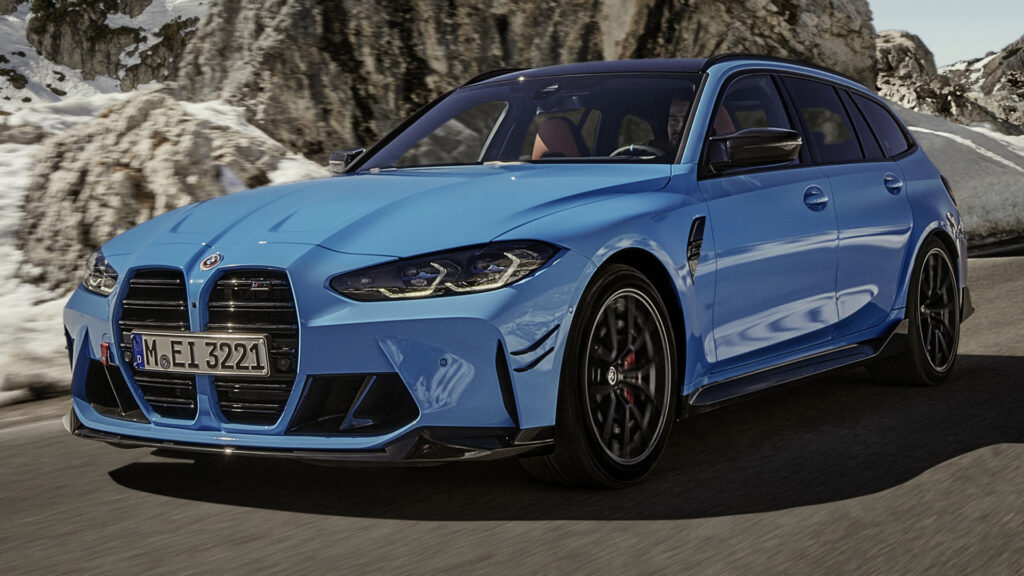Roughly six months after our spy photographers stumbled across what appeared to be a BMW M3 CS Touring testing at the Nurburgring, a new report has surfaced that suggests the car could launch in 2025.
The M3 Touring has been well received by enthusiasts since its launch and it only makes sense for BMW to want to capitalize on its popularity with an enticing new variant. It is logical to assume that the M3 CS Touring will follow the same recipe as the sedan and adopt a handful of new components, weight-saving measures, and some small power gains to make it even better.
BMW Blog notes that the M3 CS Touring will be based around the sole available M3 Touring variant, the Competition xDrive. This model is good for 503 hp from its 3.0-liter twin-turbocharged six-cylinder but the CS should deliver the same 543 hp as the sedan. Drive will continue to be sent through all four wheels and like the sedan, its bound to be offered exclusively with an eight-speed automatic transmission.
Read: BMW Confirms M4 CS For 2024, Provides Updates On M3 Facelift And New M5
The M3 CS Sedan is able to hit 62 mph (100 km/h) in a mere 3.2 seconds and it’s reasonable to expect the M3 CS Touring to almost keep pace with it. Various other changes will be made, including the implementation of various new lightweight carbon fiber parts and distinctive wheels. The sedan also has a cast aluminum strut brace and benefits from changes to the camber, adaptive dampers, anti-roll bars, and steering. The Touring should receive all of the same modifications and will be slightly lighter than the standard model.
BMW will also make a series of interior changes to the M3 CS Touring like the availability of its hardcore carbon fiber bucket seats.
Production of the M3 CS Touring will be limited. Given how popular the standard model has been, BMW Blog notes that it could be a challenge to find the capacity to build all that many examples. It understands that fewer than 2,000 units will be produced globally.




